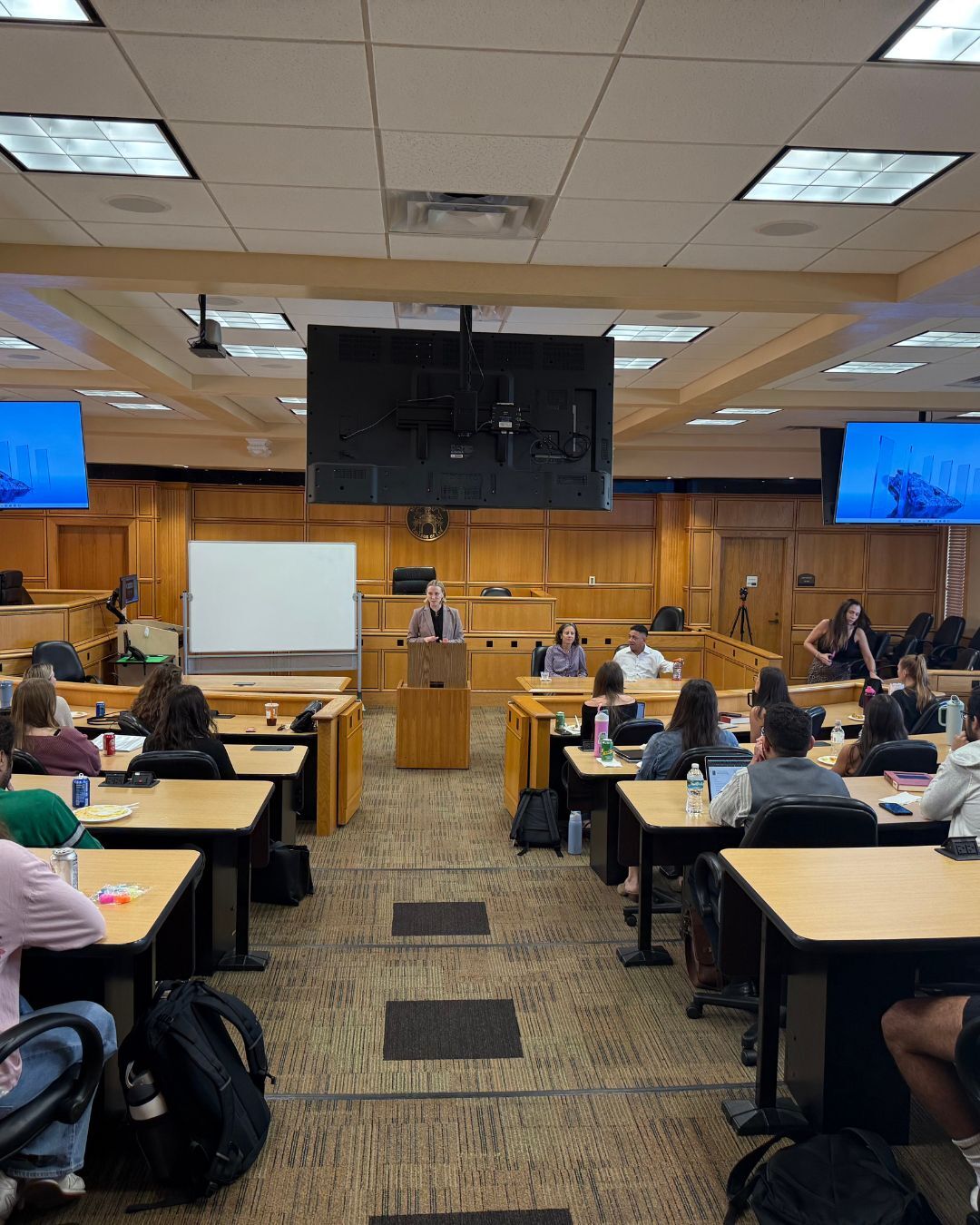
When we say that a lawyer “represents” their client, we mean that they act on their client’s behalf as they navigate the complex requirements of the legal system. But there’s another sense of “representation” that we consider less frequently: how often do lawyers look like — and come from similar backgrounds as — the people who hire them?
To consider that question, one would have to ask: how diverse are the people who practice law? Do they look like the rest of the American population?
Karen Thompson of the Innocence Project — a nonprofit organization that works to overturn wrongful convictions — addresses the relatively unusual situation that unfolds “when the lawyer looks like the client” in criminal defense cases. She writes that every year without fail at the Innocence Network, a pro bono legal defense conference, “two black men from the office—the managing attorney and a case analyst—are assumed to be exonerees, a mistake that is not particularly surprising given the lack of diversity in the legal field and the overrepresentation of black people in the criminal justice system.”
As a black woman who got her start working in criminal defense in the Deep South, Thompson writes that each night when she prepared for the next day’s trial she would “preemptively feel the isolation and hostility of being a black lawyer in a room that has probably never seen one; a woman in a room that doesn’t cotton to feminism.”
How diverse is the legal profession?
First, some sobering numbers about diversity in the legal profession. According to the American Bar Association,
- Only 37% of practicing attorneys are women. 63% are men.
- Men outnumber women in equity partnerships 5 to 1.
- Only 4.7% of practicing attorneys are Black (vs. 13.4% of the total U.S. population).
- Only about 10% of attorneys are in other minority groups.
The disparities are clear. While white people are 58% of the American population, they make up about 85% of the practicing attorneys in the United States. And research shows that these numbers have been slow to change. Between 2009 and 2016, the number of female and minority lawyers increased by just one percent each.
However, the benefits of having more diverse attorneys is clear. Putting aside the ethical question for a moment, studies have shown that diverse organizations are better at generating new ideas and finding unique approaches to problem solving, and companies in the top quartile of racial and ethnic diversity are 35% more likely to perform better financially than other companies in their industry.
 The Mansfield Rule
The Mansfield Rule
One attempt that’s been made to address this disparity is The Mansfield Rule, a certification process initiated in 2017 aimed at diversifying the power structure of law firms and corporate legal departments. It’s named after Arabella Mansfield, the first woman admitted to the Bar Association in 1869. About 35 law firms were early adopters of the rule in 2017 and since then the number of organizations that have achieved certification has risen to over 275 law firms in the U.S. and Canada and about 80 legal departments.
What sets the Mansfield Rule apart from diversity requirements in other fields is its emphasis on implementing changes to the way appointments, elections, and promotions are made to influential roles and leadership committees within an organization. Rather than mandating specific quotas for diverse hires, the Mansfield Rule uses insights from behavioral science to require that a critical mass of 30-50% of the applicants considered for key promotions and appointments are diverse — a number that researchers claim helps disrupt fixed biases that prevent change within organizations. The certification process changes each year so that firms have to be progressive in their approach to the issue.
Access to Legal Education
However, part of the issue is the need to address the relatively small pool of diverse candidates available for law firms and corporate legal departments to draw upon. The ABA notes that this means addressing root causes that make women and people of color less likely to get a legal education and become practicing attorneys in the first place. Students of color often lack access to the family or institutional knowledge and support to find and make use of resources they need to make their way through college, law school, and even the law school application process.
Organizations such as the Legal Education Access Pipeline (LEAP) are working to address these exact issues. LEAP helps historically under-represented groups gain access to legal education through comprehensive programs such as LSAT prep courses, mentoring, workshops, and moot court competitions — all of which are aimed at developing students’ hard and soft skills so that they’re better acclimated to the demands of the law school process. LEAP founder Cindy Lopez stresses that one of the keys to success for first-generation law students is to build support networks with other students who come from similar backgrounds or who are pursuing similar career goals.
Diversity at Stetson
At Stetson University College of Law, we take pride in the diversity of our student body. Stetson is home to well-established organizations representing Black, Asian-American, Hispanic, and LGBTQIA+ students, and we’re members of the Florida Law Schools’ Consortium for Racial Justice (FLSCRJ).
As of the Fall 2021 semester, 52% of our students are women, an unusually high proportion for law schools, and 28% of our students self-identify as racially or ethnically diverse. In fact, in 2016 we were identified as one of the Top 20 most diverse law schools in the nation, according to preLaw Magazine.
You can read more about our commitment to inclusion and listen to the season one episode of our “Real Cases” podcast talking to members and leaders of our diverse student organizations.
Florida’s oldest law school, Stetson University College of Law is ranked #1 in the nation for trial advocacy and #3 for legal writing by U.S. News and World Report. Each day Stetson grads play a pivotal role in shaping the practice of law throughout the country. Apply today!
Check out Real Cases
In the latest episode of Real Cases, the Stetson Law podcast, recent graduate Denia Angelino discusses her experience investigating state and ABA guidelines for attorney conduct in an independent study course she designed with Professor Christine Cerniglia in 2020. The daughter of parents who emigrated to the United States from Mexico and Honduras, Angelino has begun a career in employment discrimination law in California. Her firsthand experience witnessing biased and prejudiced statements by lawyers online led her to design a curriculum with Cerniglia — one that assesses how regulatory bodies address prejudiced behavior by attorneys that takes place outside the immediate context of their professional practice.
Topics: Real Cases Podcast
.jpg)

